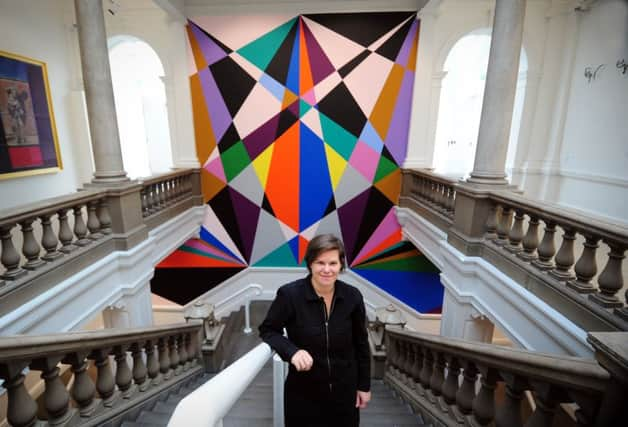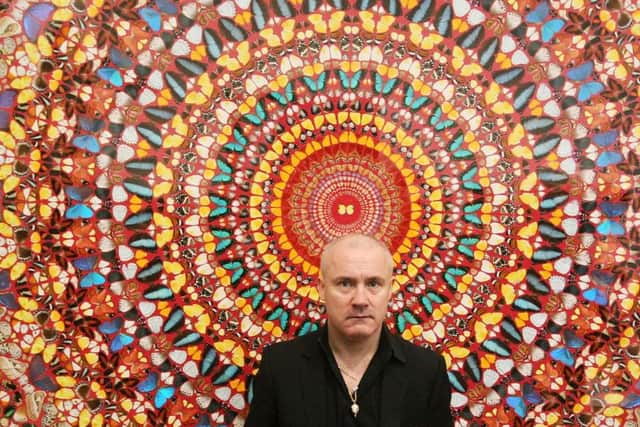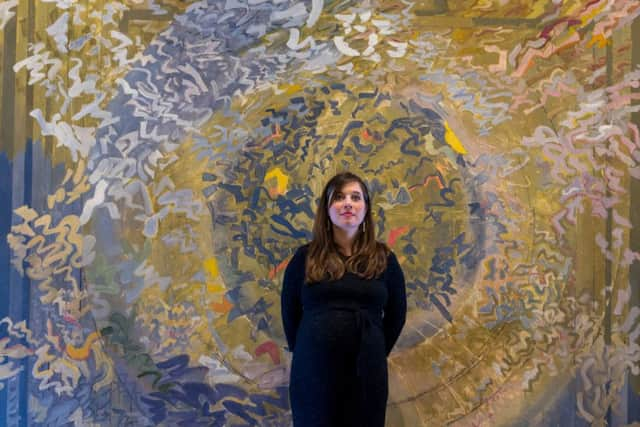Leeds - the art and soul of a city


When it comes to theatre, Leeds has a lot to make a song and dance about (if you’ll pardon the pun).
It’s home to such lauded venues as the Grand, Leeds City Varieties and West Yorkshire Playhouse, not to mention the HQ of Northern Ballet which has helped established the city as the North’s capital of dance.
Advertisement
Hide AdAdvertisement
Hide AdLeeds has produced its fair share of notable artists down the years, too. John Atkinson Grimshaw, whose hauntingly evocative pictures of Victorian life have lost none of their lustre, was born in the city, while Jacob Kramer, a Russian emigre whose portrait subjects included Gandhi and Delius, made Leeds his home after the First World War.


Then there’s Damien Hirst who grew up in the city and studied at Leeds College of Art and Design and has gone on to become one of the most famous (and richest) artists on the planet.
The art scene is aided by the Leeds Art Fund which has been going for more than a century. It owns or has helped buy more than 430 works for Leeds art galleries including those by such luminaries as Andy Warhol, Francis Bacon and Henry Moore and it continues to play a key role in acquiring contemporary and historic art.
The city is also home to the Henry Moore Institute, which makes up part of the acclaimed ‘Yorkshire Sculpture Triangle’ and has drawn praise the world over.
Advertisement
Hide AdAdvertisement
Hide AdEven so, there’s a nagging feeling that the visual arts don’t quite have the same kind of clout as say theatre or music, though this perception is slowly starting to change.


In 2015, Leeds hosted the British Art Show, one of the most influential and exciting contemporary arts exhibitions in the country, and last autumn saw the long-awaited reopening of Leeds Art Gallery following a major renovation.
Then came the European Commission’s contentious decision to remove the UK from the Capital of Culture programme, putting the kibosh on Leeds’s 2023 bid. However, rather than throwing the baby out with the bathwater the city is pushing on with plans for a new 12-year cultural strategy outlined in its bid.
This is not only good news for Leeds, it’s good news for arts and culture in the city.
Advertisement
Hide AdAdvertisement
Hide AdNext month, the Stanley and Audrey Burton Gallery, based at the University of Leeds, celebrates a decade of ‘making art accessible’ in a new exhibition.


The gallery was originally set up in 1970 but it wasn’t until it underwent a major £1.6m refurbishment and was given a new name 10 years ago this month, that visitor numbers grew. “That turned us into a proper gallery really,” says Layla Bloom, the university’s art curator who is in charge of the forthcoming exhibition. “We went from having about 8,000 visitors a year to around 20,000 that we get today.”
It’s helped bring the collection, which includes work by artists such as Stanley Spencer, Jacob Epstein and Atkinson Grimshaw, to a wider audience. So, too, has the internet. “We have people from around the world requesting loans from us who previously wouldn’t have known these objects were here, even though we’ve had some of them for over a hundred years.”
Bloom says the city’s reputation as an art hub has ebbed and flowed since the turn of the last century. “Leeds has been a real centre for the visual arts. There have been these really big moments that revolve around the city and then they die out for one reason or another.”
Advertisement
Hide AdAdvertisement
Hide AdThis can be traced back to the Leeds Art Club - founded in 1903 by school teacher Alfred Orage and Yorkshire textile manufacturer Holbrook Jackson.


Under the leadership of Frank Rutter, director of Leeds City Art Gallery at the time, and Michael Sadler, the chancellor of Leeds University, the club organised a series of avant-garde exhibitions featuring works by Van Gogh, Cezanne, Gauguin and an early one by Picasso - (It’s also claimed the Russian artist Kandinsky came to Leeds and visited the club).
During the 1950s and 60s Leeds became a cultural hotbed once again following the creation of high-profile artists in residence at the university, with Kenneth Armitage and Terry Frost among those enticed to Yorkshire.
“In the sixties, Leeds College of Art also spearheaded a new way of teaching art which spread across the whole country. So that period was a great time to be in Leeds if you were a visual artist. And I think with all the great interest in sculpture we’re in another great moment right now,” says Bloom.
Advertisement
Hide AdAdvertisement
Hide Ad“Leeds City Art Gallery has one of the best collections of British 20th century art outside London, so in terms of public collections we are very strong.
“I think where we suffer is we don’t have enough of a buying and selling market and there’s a lack of private art galleries to help this. They tend to come and go and that’s a problem because it means a lot of artists stay here for a while and create this excitement and then leave because the people buying art are in London or Edinburgh and Glasgow.”
Even so, she believes the art scene in Leeds is enjoying a resurgence. “Interest in public art has grown exponentially in the last few years. Art creates a sense of place, it encourages people to stay here and it entices them into places like art galleries which they might never have been in before... it’s a really hot topic right now,” she says.
“We’ve got excellent museums and galleries and art teaching in the city is fantastic, so we produce great young artists we would just like to keep more of them here.”
Advertisement
Hide AdAdvertisement
Hide AdDown the road, Leeds Art Gallery and the Henry Moore Institute are hosting the city’s biggest collection of sculptures in a new exhibition across both venues that features over 200 different works.
Sarah Brown, Principal Keeper at Leeds Art Gallery, believes visual arts in Leeds are in rude health right now. “When we had the British Art Show in 2015 one of the big ambitions was to make closer connections with artists who live and work in the city.”
She points to the success of arts organisations and centres like East Street Arts, The Tetley and Mexico as a sign that the art scene is thriving.
“Leeds is a great place for opera and theatre and has flagship ballet organisations and the visual arts are right up there with these now.
Advertisement
Hide AdAdvertisement
Hide Ad“And that’s what people in a city like this want, they want a strong cultural offer. Things like good transport and education are important and I think culture goes hand in hand with that.”
Brown also believes that Leeds can hold its own with rival cities when it comes to art. “Manchester and Liverpool are very good at being cities and so is Leeds, but it also has strong connections with the rest of Yorkshire.
“There’s so much potential and so many opportunities for artists to live and work here and for Leeds to become a great place not only for showing art but for creation and fabrication.”
Independent art scene is thriving
East Street Arts - contemporary arts organisation founded in 1993 that promotes artists through events and helps with studio space.
Advertisement
Hide AdAdvertisement
Hide AdThe Tetley - centre for modern art housed in the iconic art deco headquarters of the former Tetley Brewery that supports the production of new work.
Mexico - artistic collective based in the city centre who work together on projects to show and support contemporary art.
Basement Arts Project - artist-led initiative that promotes artists nationally and internationally as well as maintaining a broad programme in Leeds.
Assembly House - art organisation that is home to over 40 permanent studio-holders and two project spaces.